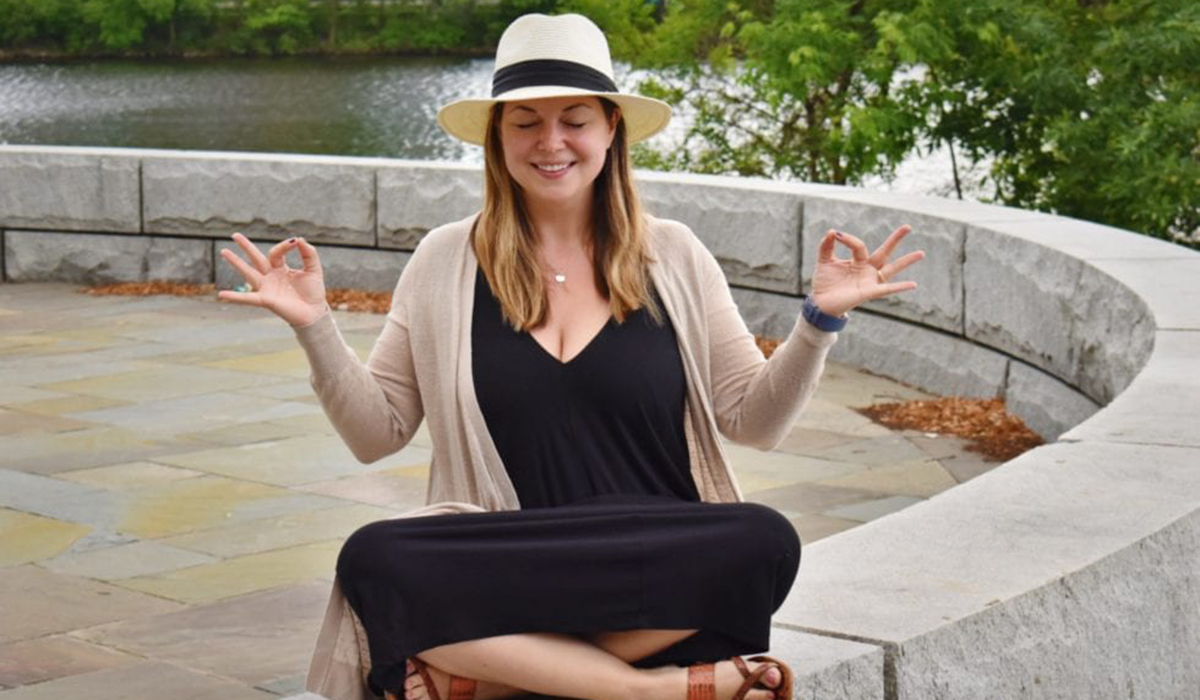And the other two that keep me happy in under five minutes each.
I have now been doing some version of meditation for almost a decade but have only built it into my daily life within the last year. Even calling my daily practice “meditation” triggers my imposter syndrome. Can I call what I do “meditation?” The term seems inaccessible to me for some reason. Even now, it evokes images of lean, bearded men sans shirts in the middle of a sunset lit desert, eyes closed, air resonating with the chimes of invisible gongs.
Some experts claim that forty minutes or more per day is the most effective and impactful amount of time meditation. This sounds amazing, albeit intimidating, but in this season in my life (building a company, parenting a toddler, running my household, writing whenever I can), forty minutes per day is simply impractical. Yes, I know that it could potentially make the rest of my day more productive. Yes, I realize that I am the only one that sets my priorities and manages my time. Still, forty minutes of dedicated meditation per day is just not for me, not today.
Instead, I probably meditate three to five times per day, which sounds like a lot. But only two of these meditations are planned, and all of them are brief and customized to my needs and preferences.
For about five minutes when my alarm goes off in the morning, I get extremely comfortable, and I conduct some version of a loving-kindness meditation. I think about the people in my life that I will be in contact with that day: family and friends, clients, investors, colleagues, pets, strangers on the street. I think about them one-by-one, and I wish them well. I send them love, I send them kindness, and I start my day with a joyful heart. A bonus is that I am also using this time to think through the structure and schedule of my day. It’s a two-fer!
Likewise, for five minutes when I first get into bed in the evening, I conduct a gratitude meditation (emerging theme: I like to meditate laying down). I think about the things that went well for me throughout the day, and I feel thankful for those events. I think about the people who contributed positively to my day, as well as those who challenged me, and I say thank you. I think about the strangers that smiled at me (or crinkled their eyes in a way that made me think they were smiling under their masks) and the dogs that wagged their tails and the store clerk that made a genuinely funny joke, and I feel so grateful for these interactions. I fall asleep with gratitude in my heart and I tend sleep better because my mind is full of small happy memories rather than worry and anxiety.
These two meditations have been relatively easy to incorporate into my daily routine: they require no mat or bolster or soothing music, no pens or papers, no incense, I do not even need to be sitting up. They are “guided” in the sense that I have a structure that I follow, and yet are short enough to digest and fluid (and effective) enough to keep me interested in completing them every day.
The real magic, however, is in the in-between moments that define my day. As an entrepreneur, I find myself in the position, at least once per day, of feeling frustrated, defeated, overwhelmed, or unfocused. In the past, these emotions would have the ability to derail my entire workday. I could potentially lose hours of productivity because of a meeting that did not go according to plan, or an email that struck me the wrong way. Earlier this year, and without even realizing what I was doing, I started using meditation to regain control over these negative emotions. I simply ask myself one question:
What can I learn from this?
OK, in honesty, I do a couple other things while asking myself this question. First, I close my eyes (skip this step if driving)! Then, I focus on my breath. If I am feeling stressed, my breath and my heartbeat will both be rapid. I want to slow down. I breathe deeply wherever I am in that moment, and I visualize that I am inflating a balloon that sits deep in my abdomen. I learned this imagery at Kripalu, and it really works for me, but you are free to use whatever visualization or counting technique works best for you.
Then I usually tell myself a one sentence mantra. Mantra – another inaccessible word. It is literally just a sentence that resonates with me, and it changes depending on the day and the circumstance. Usually, I employ some version of the following:
- I am exactly where I am supposed to be.
- This challenge is making me stronger and better.
- This hurdle is taking me one step closer to my goal.
- I have overcome every obstacle that I have faced to get where I am today.
- No challenge is insurmountable for me.
And then, the key to this whole thing for me, is the inevitable question:
- What lesson is being offered to me right now?
Sometimes, the answer comes to me easily and immediately. More often, the answer is complex and might not occur to me in that moment, or that day, or that month. But the question itself has the intended effect: it grounds me. It frames the lesson itself as a gift. It reminds me that disappointment and frustration and failure are not reasons to give up. It builds my resiliency muscle. It calls upon the student in me, my inherent curiosity, to dig deeper, push farther, discover new paths, define new limits.
With my one-question meditation, I can refocus and revive myself emotionally, mentally, and physically within five minutes, wherever I happen to be. I can simultaneously trigger all these productive reactions and realign myself to my ultimate goals. I can focus on moving forward rather than dwelling in an uncomfortable state of negativity and inaction.
“Meditation” looks different for everyone, but when you find what works for you, it can be an incredibly effective tool. Maybe this one-question can help reframe your day like it does for me, or maybe it will empower you to think of one of your own. Whatever your takeaway, please know that I am grateful that you read this, I send you love and kindness, and that there are always lessons to be learned, and that is a very good thing.
– Colleen





0 Comments